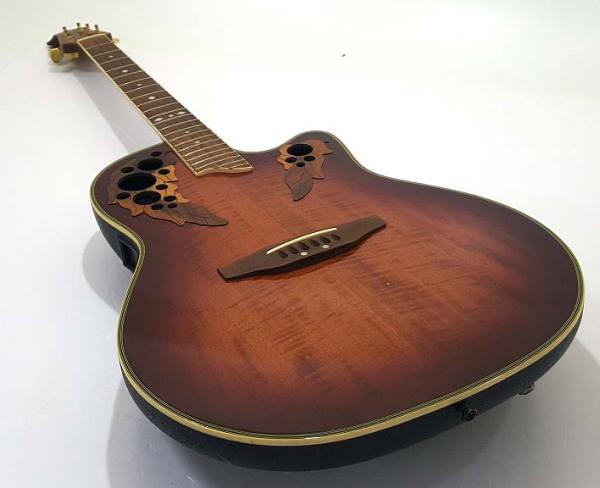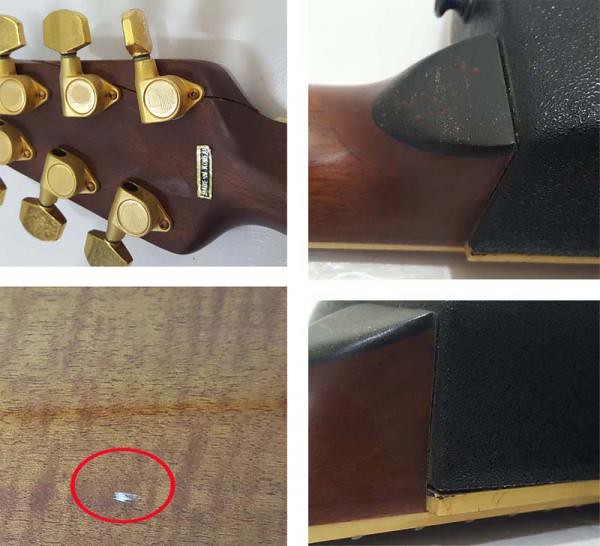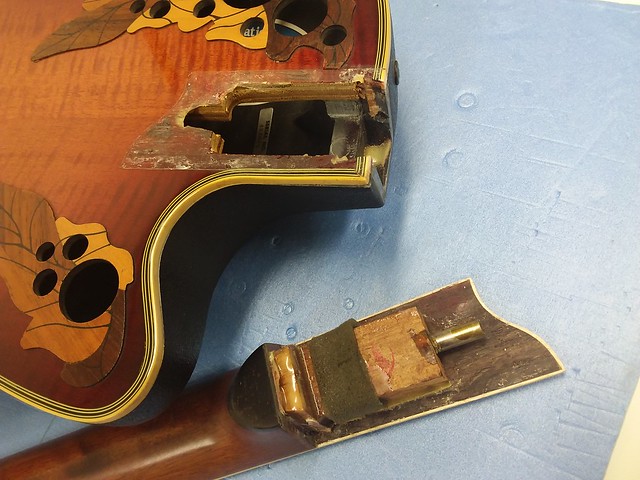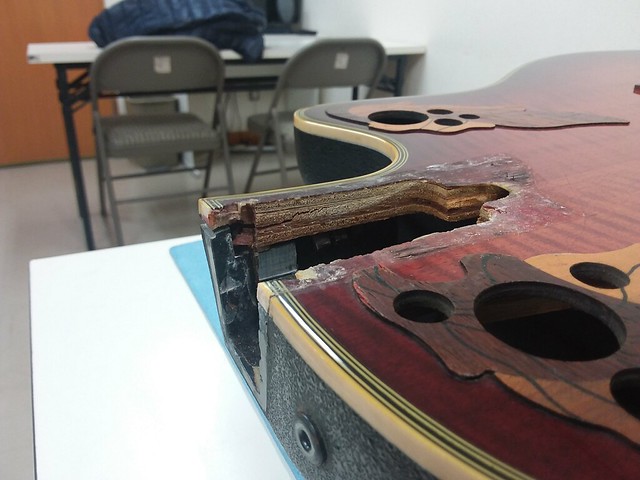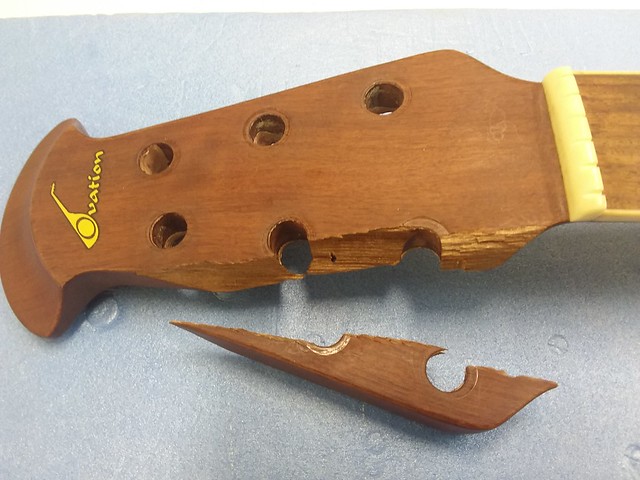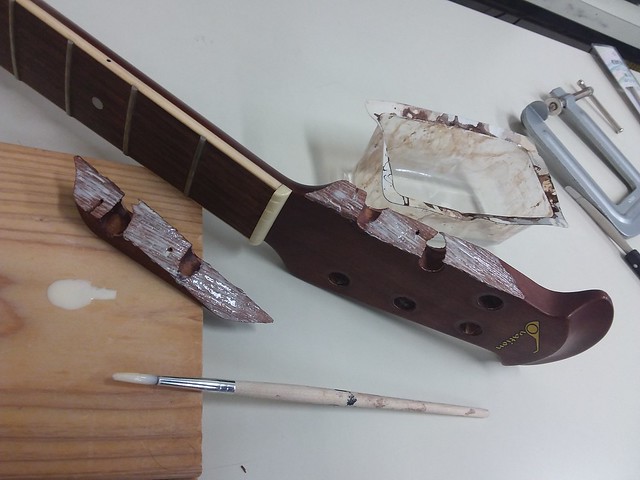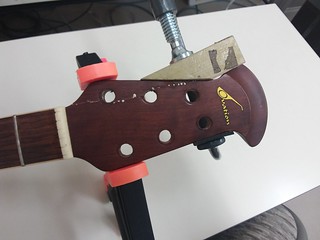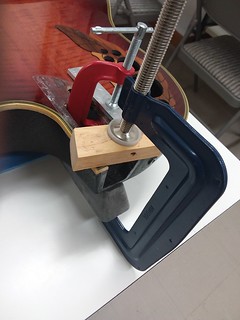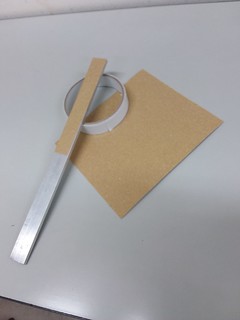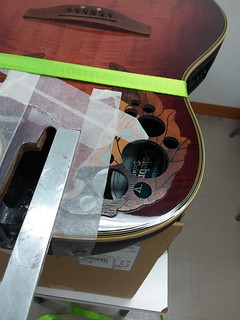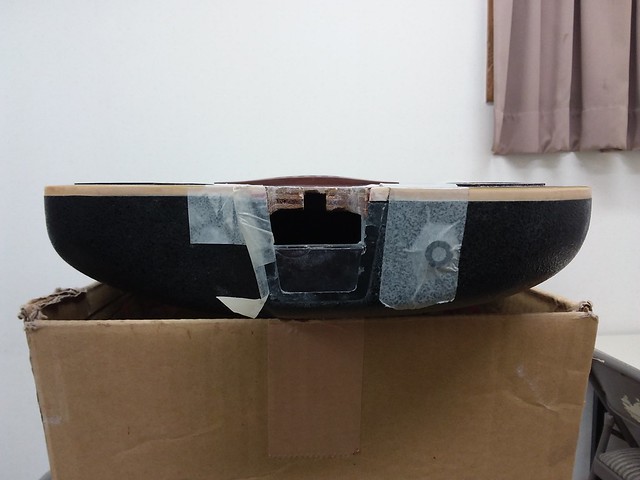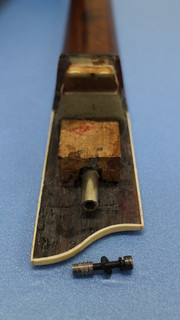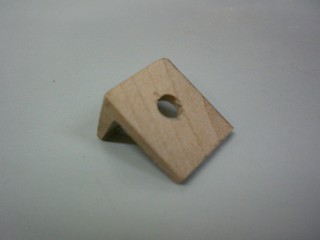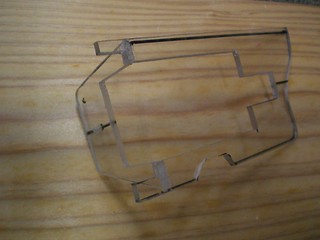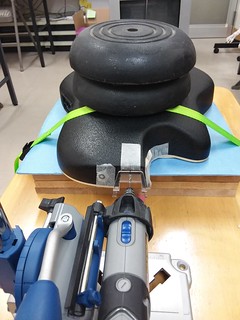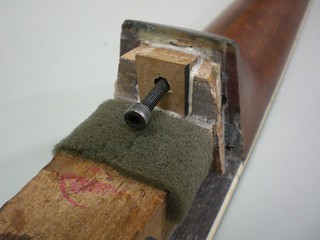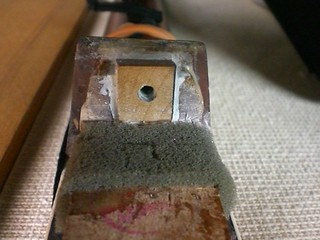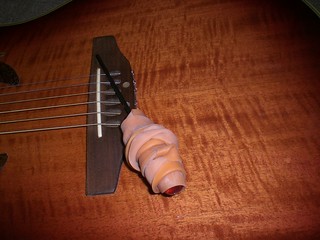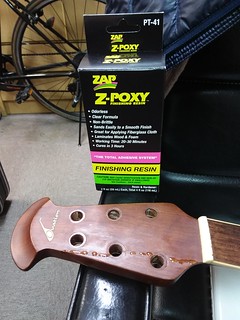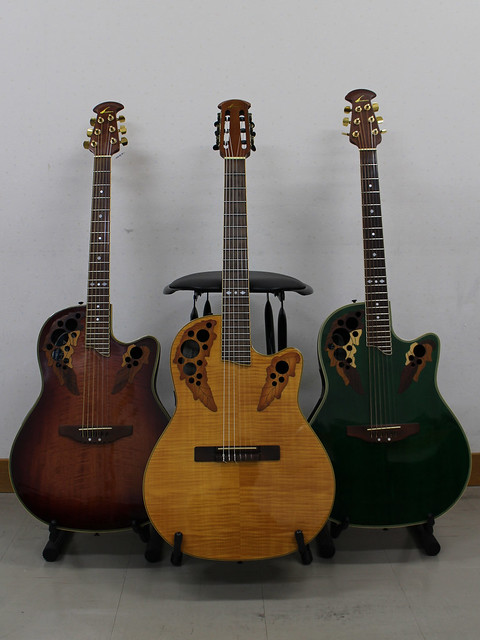|
| ||
| The Ovation Fan Club | ||
| ||
| Random quote: "Believe me when I say that some of the most amazing music in history was made on equipment that's not as good as what you own right now." - Jol Dantzig |
 '95 CC257-YB Glue-On to Bolt-On Neck Conversion '95 CC257-YB Glue-On to Bolt-On Neck Conversion
| View previous thread :: View next thread | |
| Member Communities -> Bottom Feeding Luthiery Guild | Message format | |
| arumako |
| ||
Joined: October 2012 Posts: 1091 Location: Yokohama, Japan | Hello OFC, A friend of mine brought in a CC257-YB in need of some serious repairs including a neck reset. I really like the understated finish and the flamed sound board on this one. The SSB configuration proved to be a challenge, but I went ahead and decided to convert the neck from a glue-on to bolt-on configuration...
The repairs needed were three-fold:
First, the neck was removed using my zip-lock bag trick. Since my CC247 Project, I've come to realize that injecting 50~100ccs of boiling water is way less water than steaming a neck off, and is faster and mre effective. Since the Os have a fiberglass bowl, there is no need to worry about warping the back and sides...
The neck failure also caused portions of the top to crack and peel upward. These laminated Celebrities are prone to this kind of failure when the guitar endures severe temperature changes.
A drop caused the head stock to completely crack off...
Dove in from the head stock first. Used Titebond for this joint, but first applied a very light coat of water on the areas to be joined. Also, diluted the Titebond with 1 part water to 10 parts Titebond (mixed well) and brushed it on to the joint over the lightly applied water. Learned this from a Japanese Luthier. Alghough it thins out the Titebond, apparently it makes the adhesive more viscose and seep into the pores of the wood. When it all dries up the bond is strong, but it will not hold up to high heat exposure.
The clamp was applied for 24 hours. Continued to work on repairing and prepping the neck joint on the body of the guitar. Used the same method to get plenty of Titebond into the crack and clamped them down...
Applied some 120 grit sand paper on a perfectly flat aluminum bar using double-stick tape, and prepared the body neck joint to be perfectly flat...
By carefully sanding with even measured strokes it doesn't take long to get the area completely flat and ready to host the fingerboard extension...
After cleaning up the neck heel and neck joint, it was very apparent that there was not enough room to convert this heel to a bolt-on neck. Needed to make a heel extension if this was going to work. The bolt & insert needed to be as small as possible, and there will be room for only 1 bolt. Used some nice Birch that I cut from a hockey stick to make an extension...
Used my bolt-on neck drilling jig. Made one for Mid-Depth and one for Super Shallow. This one's obviously for SSB. The jig enables me to drill holes accurately into the neckand the bowl...
Once the hole is drilled, Hysol 9462 is applied in the drilled hole. It acts as a lubricant and enables the insert to screw in smoothly. The neck heel needs to be clamped perfectly to ensure the heel doesn't crack while screwing in the insert. Hysol 9462 is then applied to the Birch extension and the extension is put into place. Once the insert and extension are in place the bolt is screwed just a few threads into place (shallow) to ensure alinement. Small adjustments can be made by tapping on the bolt tip very lightly.
Clamp and wait for 24 hours and trim the excess adhesives and carefully remove the bolt. Once 48 hours passes, Hysol 9462 gets really really hard and removal of the bolt maybe jeopardized. At 24 hours, Hysol is soft enough to trim and maintain the integrity of the shape of the threads for easy bolt removal and application. After bolt removal wait another 48 hours (a total of 72 hours). After checking the break angle of the neck joint the neck is assembled to the body. To glue the finger board extension to the top, I used Z-Poxy 30-minute Epoxy. Works well for adhering parts that are not high-stress joints. I love my doorstop jig. It's hardness/softness is perfect, and angled to fit the bowl! Once the neck is in place, the bolt is installed and finger tightened.
After 48 hours, the bolt is then tightened to ensure the heel is flush and the neck secure. For this small 4mm bolt I had to wrap rubber band around my allen wrench driver. Still needed to clean up the head stock. Some light sanding with 120 grit sand paper; then, I used Z-Poxy's filling resin to fill in any gaps.
Waited another 48 hours and used scraping and wet sanding to bring down the bumps left by the filling resin until everything was smooth. Can't polish it to a gleaming luster otherwise the rest of the head stock will look funky. Finally, I used some automotive waxing compounds to take off nicks and dings. This Holt's stuff works great on any polyurethane finish. Not so good for lacquer and shellac...
The CC257-YB is to the left. My CS249-4Y and CC247-GS are center and right respectively. All three guitars are glue-on to bolt-on neck conversions.
Incidentally, the CC257-YB is in great shape - low action and very easy to play. Actually, it doesn't sound like an SSB at all anymore. Our OFC-Japan (well, within my local vicinity anyway, I cannot attest to represent all O fans in Japan!) buddies all think it's the best sounding super shallow Elite style Celebrity they've ever heard; so, that's a really nice compliment. Regardless, it just doesn't get the low-end rumble and mid-range punch that an 1868 gets. Still curious to see what would happen if the bracing pattern was converted to a pure Quintad pattern by removing the cross brace from the so called Asia only "K-3" bracing pattern. Also, the Mid-Depth glue-on to bolt-on conversion requires two bolts. My CS249-4Y conversion is posted in this thread here: http://ovationfanclub.com/megabbs/forums/thread-view.asp?tid=48161&posts=40&start=1 Hope this information is helpful to somebody out there. Thanks! Edited by arumako 2018-05-05 11:07 AM | ||
| |||
| marenostrum |
| ||
Joined: August 2007 Posts: 1008 Location: Tuscany, Italy | Great Job Arumako ! Where did you find the wedge to keep the guitar pressed during gluing ? It's a in-house built tool ? Thanks | ||
| |||
| Love O Fair |
| ||
Joined: February 2016 Posts: 1876 Location: When?? | Thank you, Ken! As always, your photos and descriptions are top notch coverage of your top notch work!! Tell ya what... when I become King of the World and hand down the order that "Guitar Channel" is offered as a free part of everyone's cable lineup, I will make sure that you and Dan are on the payroll there. Don't worry, I won't order you to participate if you don't want to.. but when you see the salary I think you will both dive at it. Now, if they would just make me King. | ||
| |||
| DanSavage |
| ||
Joined: June 2012 Posts: 2339 Location: Pueblo West, CO | Nicely done, Ken. I love the door stop caul. One suggestion on future neck repairs. Instead of thinned tite bond, use heated Old Brown Glue, or any type of hide glue. One trick when you don't have to make a new piece is to paint on a coat of thinned hide glue known as a sizing coat onto the mating surfaces and let them dry. This fills the pores of the wood. When you're ready to join the pieces, you paint on a coat of heated regular strength glue, then join and clamp. One of the things that makes hide glue a better choice is that it doesn't creep when heated. All other glues except CA will creep. Hide glue and CA are the only two that don't. Because the repair you did on this guitar is a pretty low-stress joint, you shouldn't have any problems with it. Dan Edited by DanSavage 2018-05-05 4:56 PM | ||
| |||
| arumako |
| ||
Joined: October 2012 Posts: 1091 Location: Yokohama, Japan | Thanks for the encouragement folks! @ marenostrum - That "wedge" is a door stop. You know, those rubbery wedges that are used to keep doors open? The angle of the wedge is perfect to use as a caul when clamping Os. It doesn't slip and squares the clamps up nicely! @ Love O Fair - Hey Al, you don't have to pay me to work on guitars, especially Os. I just love working on them. Of course, I only do non-commercial work for friends, family and referrals so, usually you have to wait a long time for me to get to it! I'm not sure the King will be to thrilled about a long wait! When the salary situation gets squared away, give me a buzz. LOL! @ Dan - Thanks for the advice! I'll definitely use hide glue next time. An on-line Japanese Luthier supply store opened this past winter and they sell supplies at reasonable prices (for Japan anyway). The Luthier that gave me the tite-bond tip, also warned that the joint won't hold under extreme heat; but since I was in a bit of a hurry to get this one done...keeping my fingers crossed. I guess I'll find out how she holds out in a few months! By the way, thanks for the PrimeVibe tip also. Mine just arrived yesterday, and it was such a good deal! Can't wait to try it on my CS249! Hysol 9462 is really amazing stuff. For applications with high stress joints like this project, I would highly recommend it. By the way, when working with these highly toxic adhesives (including CA) you've definitely got to wear gloves. They will start messing with the nerve ends in your fingers and could really do some serious nervous system damage if you're not careful. Thanks for the interest! | ||
| |||
| oldbrodave |
| ||
Joined: April 2018 Posts: 10 | I am the guy with the glue type question. I have the neck off the mando and am doing some clean up and fixing the broken internal parts. I am intrigued by the bolt on neck idea. I have done bolt on necks on some gas can banjos with fair success. The heel of the mando is pretty small but the attaching point in the body is pretty robust looking. What about drilling in under the heel cap (it came off during the neck steaming) and using a barrel nut and bolt instead of a threaded insert? Seems like maybe there might be less chance of splitting the heel. would have to put some sort of spacer on the bolt to facillitate tightening it under the truss rod or maybe a deepwell socket would do. I still am not sure what type glue to use between the plastic and the wood. I am strictly just a guy who likes to tinker with stuff in my old age and would appreciate any advice. Dave | ||
| |||
| arumako |
| ||
Joined: October 2012 Posts: 1091 Location: Yokohama, Japan | oldbrodave - 2018-05-06 10:03 AM What about drilling in under the heel cap (it came off during the neck steaming) and using a barrel nut and bolt instead of a threaded insert? Seems like maybe there might be less chance of splitting the heel. ... I still am not sure what type glue to use between the plastic and the wood. Dave Hi oldbrodave! Nice to meet you. Nice mando project you've got going there. Like you said, since the heel cap is off, a barrel nut and bolt would work well. I like the inserts because it give me better control of bolt/insert positioning. If you are going to go the bolt-on route, you don't need any glue between the heel and the bowl. The bolt will have enough strength to hold everything together. I'll comment on your "Glue type" thread also... | ||
| |||
| Jump to page : 1 Now viewing page 1 [25 messages per page] |
| Search this forum Printer friendly version E-mail a link to this thread |
| This message board and website is not sponsored or affiliated with Ovation® Guitars in any way. | |
| (Delete all cookies set by this site) | |


